Mastering Screenshots on Windows: A Complete Guide
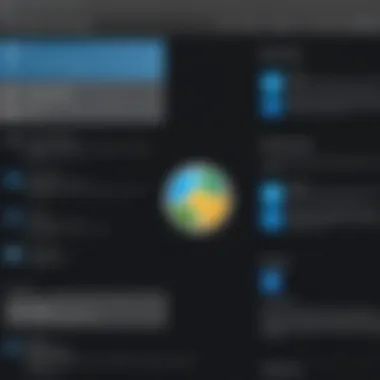
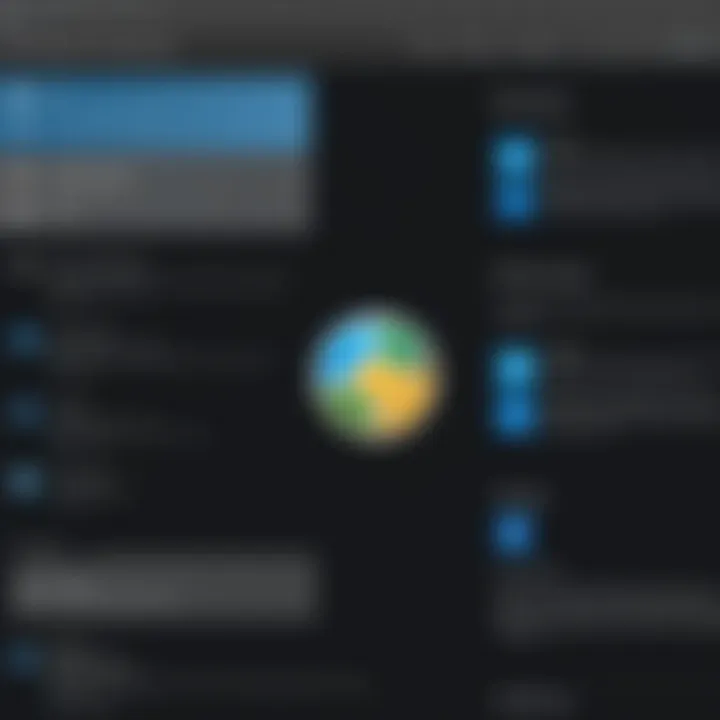
Intro
Taking screenshots on Windows is a task that, while seemingly simple, can greatly enhance productivity for professionals and tech enthusiasts alike. This guide delves into the various methods available for capturing screenshots on the Windows operating system. From built-in features and keyboard shortcuts to third-party applications, each method will be explored in detail. Understanding these tools and techniques is invaluable, particularly in a world where visual communication is increasingly essential.
This article not only emphasizes the techniques but also analyzes their performance and potential applications.
Product Overview
Key Features
Windows provides several built-in tools designed for screenshot capture. The most prominent is the Snipping Tool, which allows users to capture a selected portion of the screen, annotate, and save. Another notable feature is the Snip & Sketch application, which improves upon the Snipping Tool by providing an intuitive user interface and additional editing capabilities.
Also included are keyboard shortcuts, which streamline the process of taking screenshots. Users can opt for a full-screen capture by pressing the Print Screen button or use Alt + Print Screen to capture only the active window.
Technical Specifications
- Snipping Tool: Supports various capture modes (rectangular, freeform, window, full-screen).
- Snip & Sketch: Provides editing tools such as pen, highlighter, and crop functionalities.
- Keyboard Shortcuts: Alt + Print Screen, Windows + Print Screen, and Windows + Shift + S for quick access.
Performance Analysis
Benchmark Test Results
When it comes to evaluating the efficiency of screenshot tools, Snip & Sketch stands out in speed and editing flexibility. Tests show that users who utilize Snip & Sketch complete their tasks with an average reduction of 30% in time compared to traditional methods.
Real-World Usage Scenarios
In a corporate environment, screenshots are commonly used for a variety of purposes: sharing error messages with IT support, creating tutorial materials, or presenting information to team members. By understanding the specific strengths of each method, professionals can choose the most appropriate tool based on the context.
For example, in a scenario requiring quick feedback on a design, using Snip & Sketch for instant annotations makes sense. Conversely, for documentation purposes, a full-screen capture using Windows + Print Screen is more suitable.
With this, it is evident that mastering the screenshot tools available on Windows can enhance efficiency and communication, making it an essential skill for individuals in any tech-focused role.
Preamble to Screenshots
Screenshots serve a practical function in the digital workspace, making them an invaluable tool for various tasks. The ability to capture what is displayed on a computer screen can enhance communication, support documentation, and aid in troubleshooting. Understanding how to take, edit, and store screenshots can significantly improve productivity and efficiency, especially for IT professionals and tech enthusiasts who often rely on these images for instruction or reference.
Understanding the Importance of Screenshots
Screenshots hold substantial value in many aspects of digital interaction. They allow users to capture visual content that can be crucial for documenting processes, sharing information, or providing feedback. In customer support, for instance, screenshots can illustrate issues that are difficult to convey through text alone. Not only do they facilitate clearer communication, but they also help in creating tutorials or guides, making complex tasks more accessible. This importance extends to presentations, where a well-timed screenshot can provide visual context that enhances the audience's understanding.
Moreover, in the realm of cybersecurity, taking a screenshot of suspicious activity can serve as evidence for analysis and reporting. This usage underscores the critical nature of screenshots in safeguarding information and assisting in problem-solving. As technology evolves, the methods and tools for capturing screenshots have adapted, opening up more possibilities for users to enhance their workflows.
Common Use Cases
The diversity of screenshot applications is a testament to their utility in various scenarios. Some common use cases include:
- Documentation and Support: Creating guides or manuals that visually demonstrate software use or troubleshooting steps.
- Communication: Sharing screen content in teams or discussions to clarify issues or share project updates.
- Feedback and Review: Providing visual feedback on design mock-ups or software interfaces for clients and colleagues.
- Record Keeping: Capturing evidence of transactions, conversations, or digital interactions for future reference.
- Social Media and Content Creation: Collecting visuals for posts or articles, allowing creators to convey messages effectively.
Built-in Screenshot Tools in Windows
In today's digital environment, the ability to capture a screenshot is not merely a convenience; it is often a necessity. Building on the capabilities of Windows, built-in screenshot tools allow users to efficiently document their screens for various purposes, from professional presentations to personal records. Understanding these tools enables users to leverage their full potential, resulting in greater productivity.
Snipping Tool
Features
The Snipping Tool is a fundamental application that has been ingrained in Windows for a long time. One of its key characteristics is the ability to capture different types of screenshots—free-form, rectangular, window, and full-screen. This flexibility makes the Snipping Tool particularly valuable for users who require tailored captures. Moreover, the option to annotate the screenshots directly within the application is a significant plus, as it simplifies the editing process. However, one limitation of the Snipping Tool is that it lacks advanced features seen in third-party applications, which can restrict users who need more functionality.
How to Use
Using the Snipping Tool is intuitive. Users can open the tool from the Start menu and select the type of snip they wish to create. Once a screenshot is captured, immediate editing options become available, such as highlighting, adding text, or erasing parts of the image. This simplicity in access and functionality has made Snipping Tool a popular choice for many Windows users looking for efficient screenshot capabilities. Yet, its dependency on a manual launch may hinder some users who prefer a quicker access method via shortcuts or hotkeys.
Limitations
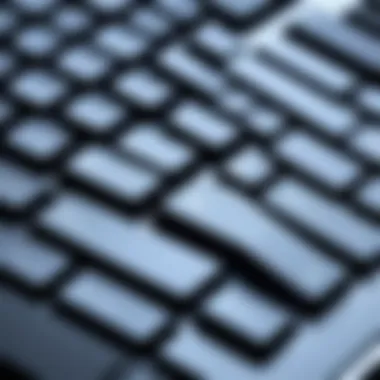
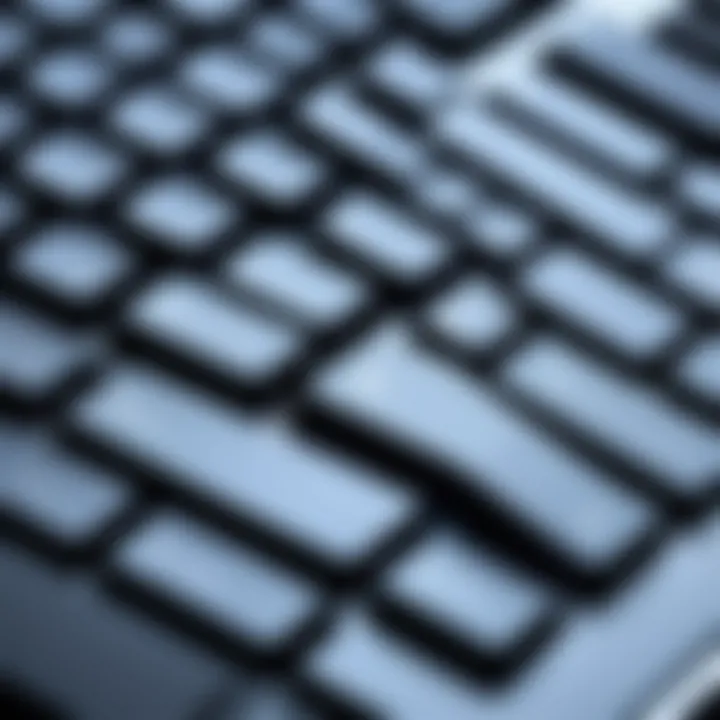
While the Snipping Tool provides fundamental features, its limitations are noteworthy. For instance, it lacks cloud integration features that are often expected in modern applications. Users can find themselves frustrated when needing to quickly share their screenshots without first saving them locally. Additionally, the Snipping Tool does not have an option to capture scrolling screenshots, which is often a requirement for web pages or lengthy documents. These elements can detract from its overall utility in diverse scenarios.
Snip & Sketch
Overview
Snip & Sketch, introduced as a more modern replacement for the Snipping Tool, enhances the screenshot experience. Integrated into Windows, it streamlines the capturing and editing process, all in one place. The ability to access it through a keyboard shortcut—Windows Key + Shift + S—improves usability. Users can bring up the interface easily, making it a fast option for those who frequently take screenshots. However, its relative newness means some users might need time to adjust if they are accustomed to the traditional Snipping Tool.
Features
A key aspect of Snip & Sketch is its robust editing capabilities after capturing a screenshot. Users can draw, annotate, and crop images with ease, which enriches the capture's context. It also allows for easy sharing via different platforms directly from the application. However, while appealing, the editing options may be too basic for professional graphic designers who might seek more advanced software.
Using it Efficiently
To use Snip & Sketch efficiently, users should familiarize themselves with the various capture modes and editing tools available. Taking full advantage of features like delayed snips or using the Windows Ink integration can greatly enhance productivity. This makes Snip & Sketch not only a tool for capturing images but also a platform for quick notes and feedback. The limitation lies in its requirement for users to switch between capturing and editing apps, which can cause interruptions in workflow for some.
Print Screen Functionality
Understanding Print Screen Key
The Print Screen key is a staple on Windows keyboards, but its functionality extends beyond merely capturing the screen. When pressed, it can capture the entire screen or just the active window, depending on additional key combinations. Understanding how to use this key is crucial for anyone looking to optimize their screenshot workflow. This accessibility makes it a beneficial choice for quick captures in any situation.
Variants of Print Screen Usage
Multiple variants of using the Print Screen key can maximize its effectiveness. For example, pressing "Alt + Print Screen" captures only the active window, which is particularly useful when working with multiple applications. The ability to paste directly from the clipboard into any image-editing software or document streamlines the process considerably. However, users should be aware that this method requires supplementary steps for editing, which may not suit everyone.
Clipboard Considerations
When taking screenshots using the Print Screen key, the captured image is stored in the clipboard until overwritten. This characteristic necessitates attention to ensure each screenshot is properly saved before taking another. The clipboard's transient nature can be a limitation for users who need to collect multiple screenshots in a short time frame, affecting their ability to manage and organize images efficiently.
Efficient employ of built-in screenshot tools in Windows can significantly impact productivity and user experience.
Keyboard Shortcuts for Taking Screenshots
Keyboard shortcuts are vital for efficiency when capturing screenshots on Windows. They provide quick access to various screenshot tools, streamlining the process and enhancing productivity. Understanding these shortcuts can significantly reduce the time spent navigating through menus, allowing users to capture exactly what they need with minimal delay. It is especially important in situations where speed is critical, such as during virtual meetings, online demonstrations, or troubleshooting.
Single Screenshot Shortcuts
Windows Key + Print Screen
The combination of Windows Key + Print Screen captures the entire screen and saves it automatically to the Pictures folder under Screenshots. This shortcut is easy to remember and simple to execute, making it a popular choice among users. The key characteristic of this shortcut is its ability to quickly take full-screen images without needing any additional input.
The unique feature here is the automatic saving of the screenshot, which conveniently eliminates the need to manually paste it into another application. This makes it a favored method for users who frequently need to share or save images quickly. However, the downside is that it captures the entire screen, so if users want to capture a specific area, they will need to resort to other methods.
Alt + Print Screen
Alt + Print Screen serves a different purpose, as it captures only the active window rather than the entire desktop. This is particularly useful for users who wish to highlight a specific application or dialog box without including the desktop background or other open windows. The key characteristic of this shortcut is its precision; it helps maintain focus on the subject of interest.
What sets this shortcut apart is that, similar to the previous one, users must paste the screenshot into an image editing software like Paint to save it. This adds an extra step to the process, which may not be ideal for every user. Its convenience and focus on the active window do, however, make it a frequent choice for professionals working with multiple applications.
Region and Area Capture Shortcuts
Capturing specific regions of the screen can offer more flexibility and intent, which is where region and area capture shortcuts become invaluable.
Windows Key + Shift + S
Windows Key + Shift + S invokes the Snip & Sketch tool, allowing users to select a rectangular, freeform, or full window screenshot. The advantage of this combination is the ability to focus on precisely what is needed. This makes it a popular choice for individuals needing to quickly annotate or highlight particular sections of their screen.
A defining feature of this shortcut is the integrated editing tools that appear after taking the screenshot. Users can quickly edit their captures, enhancing efficiency. However, this requires an understanding of the tool itself, which may present a learning curve for new users or those unfamiliar with it.
Using Snipping Tool for Area Selection
The Snipping Tool has been a staple in Windows for many years, providing a powerful method for users to capture customizable sections of their screen. It offers various modes, such as free-form snip, rectangular snip, window snip, and full-screen snip, thus catering to diverse needs. Users can take screenshots with precision and control, making it an excellent choice for professionals who need detailed screenshots for presentations or documentation.
A key characteristic of using the Snipping Tool is its ability to allow older versions of Windows, such as Windows 7, to access screenshot capabilities. Its advantages include a straightforward user interface and editing tools for annotations. However, reliance on this tool means that users need to familiarize themselves with a separate software interface, which could complicate things for some.

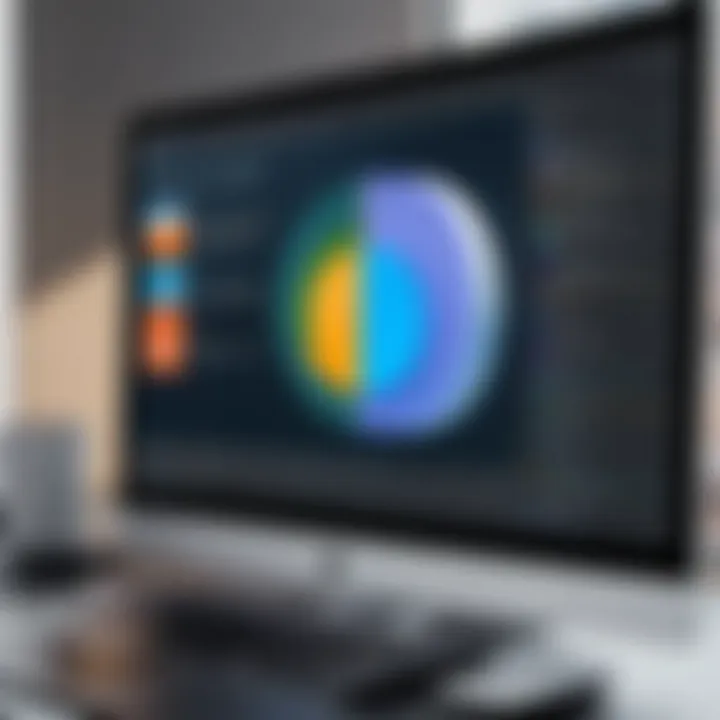
Advanced Screenshot Techniques
In a world where visual communication dominates, advanced screenshot techniques are essential for effectively conveying information. They allow users to capture more than just static images; they provide a means to document interactions, convey ideas, and share specific information with clarity. By understanding and applying these techniques, tech-savvy users can utilize screenshots for professional and personal needs with enhanced productivity.
Advanced screenshot techniques are particularly useful in a variety of contexts, such as technical support, content creation, and teaching. Using these methods, one can easily highlight anomalies on a screen or compile data for presentations. Therefore, investing time to learn these techniques can yield significant benefits in many aspects of work and communication.
Taking Screenshots of Specific Windows
When working on multiple applications, capturing screenshots of specific windows can streamline your communication. Instead of taking a full screen capture, this method targets only the relevant application or window. To do this on Windows, you typically need to use the Alt + Print Screen keyboard shortcut. This combination takes a screenshot of the active window, which can then be easily pasted wherever required.
The versatility of this technique means that it can fit various scenarios, from reporting bug issues in software to sharing a specific document. It minimizes clutter in your screenshots and focuses the viewer's attention on the most important information.
Capturing Scrolling Windows
Capturing scrolling content is often necessary when dealing with a long web page or extensive software interfaces. Traditional screenshot methods fail to capture this functionality. Here are two primary approaches to address this deficiency:
Browser Extensions
Browser extensions offer a convenient solution for capturing scrolling windows. Tools like Fireshot or Nimbus Screenshot allow users to capture an entire web page without the need to scroll manually. A key characteristic of browser extensions is their ease of use; they integrate directly into web browsers, making the process seamless.
Key Feature: Browser extensions often provide additional functionalities, such as the option to edit images or even share them directly from the extension.
Advantages of using browser extensions include their accessibility and varying features that cater to different needs. On the other hand, they might not be suitable for capturing content outside the browser or may have limitations in the free versions.
Dedicated Software
Dedicated software, such as PicPick or Snagit, offers more comprehensive solutions for capturing scrolling windows. These programs not only enable users to capture an entire scrolling window but often include extensive editing tools and file management features as well. The software is a popular choice because it consolidates multiple tools into one interface.
A unique feature of dedicated software is the ability to capture multiple types of content, including videos and animated GIFs. This versatility makes them advantageous for professionals who need varied capturing capabilities. Drawbacks may include cost and a steeper learning curve compared to browser extensions.
Third-Party Applications for Screenshots
Third-party applications offer a diverse range of functionality when it comes to taking screenshots. These tools often come with enhanced features that surpass the built-in options in Windows. They cater to different needs of users, including flexibility in capturing sections of the screen, editing capabilities, and direct sharing options. Understanding the significance of third-party applications can empower users to make informed choices and take full advantage of their screenshotting capabilities.
Popular Screenshot Tools
Greenshot
Greenshot is a widely-used screenshot tool, valued for its simplicity and effectiveness. This application enables users to take quick screenshots and then edit them immediately after capture. A key characteristic of Greenshot is its ability to export screenshots to various destinations. Whether you wish to save in different formats, send directly to a printer, or upload to an online service, Greenshot handles it efficiently.
One standout feature is image editing within the application. Users can annotate and highlight important parts of their screenshots without needing additional software. However, a potential drawback is that it may not support advanced editing features present in dedicated graphic design tools. In the context of this article, Greenshot provides a balanced combination of utility and efficiency for users.
ShareX
ShareX, another notable tool, shines in its extensive functionality. It is open-source and provides options for taking screenshots, screen recordings, and even GIF creation. A key characteristic of ShareX is its workflow automation; users can set up actions to save, upload, or edit their captures automatically. This can significantly streamline the process for frequent users.
The unique feature of customizable share options sets ShareX apart from others. Users can upload images to various external sites directly from the application. However, the complexity of the user interface may be overwhelming for some beginners. For those who are tech-savvy, ShareX represents a comprehensive alternative worth exploring.
Lightshot
Lightshot offers a straightforward interface, making it easy for novices to use. This application provides users with quick capture options and some basic editing tools post-screenshot. Its key characteristic is the ability to select specific areas of the screen with ease. Users can directly upload their screenshots to the cloud, simplifying the sharing process.
A unique feature of Lightshot is the instant search capability that allows users to find similar images online. While it has a clean interface, it might lack some advanced features that professionals seek, such as comprehensive editing tools. Overall, in the context of this article, Lightshot serves as a reliable choice for casual users looking for straightforward functionality.
Comparative Analysis
Pros and Cons
When evaluating third-party applications for screenshots, each tool brings its own advantages and disadvantages. For instance, Greenshot is excellent for quick annotations but may lack advanced editing features. ShareX is robust with many options, yet its complex interface may deter some users. Lightshot is simple and effective, but more advanced users may find it lacking in depth.
Suitability for Different Users
Understanding the suitability of these tools for different user types is essential. Beginners may prefer Greenshot for its ease of use, while advanced users would benefit from ShareX's extensive features. Lightshot can cater to casual users who prioritize simplicity. Aligning these tools with user needs enhances the efficiency of capturing and utilizing screenshots in various contexts.
Editing and Annotations After Capturing Screenshots


Editing and annotating screenshots play a crucial role in effectively communicating information captured on screen. After a screenshot is taken, the raw image often needs refinement to convey the intended message clearly. Editing can enhance visual elements or emphasize points of interest. Annotations provide context or clarity that may be missing. This section will explore the built-in options, as well as third-party software for editing and enhancing screenshots.
Using Built-in Editing Options
Using Snip & Sketch for Edits
Snip & Sketch is a versatile tool in Windows for editing screenshots. It offers a simple interface that allows users to quickly make adjustments. One key characteristic is its easy-to-use features. One beneficial aspect is the ability to annotate directly after taking a screenshot. You can draw, highligt, or add text without needing to open another application. A unique feature of Snip & Sketch is the delay function, which allows users to capture screenshots for pop-up menus with a countdown timer. However, it may not have advanced editing features like some specialized software.
Saving Variations
Saving variations of edited screenshots is important for organization and version control. Users can save multiple edits of the same image for different purposes. The key characteristic here is the option to save in various formats. This is beneficial since formats like PNG and JPEG suit different needs. A notable feature is the option, allowing for a clear naming system that helps locate files quickly. On the downside, repeated saving can lead to confusion with many similar file names unless carefully managed.
Enhancing Screenshots with Software
Image Editing Tools
Image editing tools represent an expansive category for enhancing screenshots. Specialized software, such as Adobe Photoshop or GIMP, offers numerous capabilities for fine-tuning images. Their ability to edit pixel by pixel, adjust colors, and apply filters embodies the primary function of professional-grade editing. This aspect makes these tools popular among those who need in-depth editing. However, the learning curve can be steep, which may deter some users who need quicker solutions.
Adding Text and Highlights
Adding text and highlights provides essential context to screenshots. Annotations like arrows or text labels can guide viewers' attention and clarify information in the image. This is particularly useful when sharing the screenshots in presentations or documents. The highlight feature is effective for spotlighting critical areas. A notable advantage is the immediacy of communication; one glance at an annotated screenshot can convey a complete thought.
In summary, the ability to edit and annotate effectively transforms a simple screenshot into a powerful communication tool. Understanding the various options available ensures that users can choose the right method to suit their individual needs.
Best Practices for Organizing and Storing Screenshots
Effective organization of screenshots is crucial for anyone who captures images frequently. This topic addresses methods that promote a clear structure, making retrieval easy over time. Proper management ensures that valuable information is not lost in a cluttered storage system. Moreover, it aids in professionalism, especially for IT professionals who rely on screenshots for reporting or documentation.
File Naming Conventions
Naming files in a logical and consistent manner plays a key role in organizing screenshots. Start with clear, descriptive identifiers that give you immediate context without needing to open the file. For instance, instead of naming a screenshot "Screenshot_1.png," consider a more specific format like "2023-10-15_ProjectX_BugReport.png." This name indicates the date, the project, and the content type.
Benefits of systematic naming:
- Enhanced Searchability: You can quickly find desired files by searching terms in the filename.
- Contextual Relevance: A clear name helps to remember the purpose without opening each file.
- Version Control: Indicating versions in the name can prevent overwriting important documents.
To achieve clarity, consider adopting a standard. For example, use dates in the YYYY-MM-DD format, followed by the project name, then content descriptions. This method instills order and consistency.
Using Folders Efficiently
Folders are essential for storing screenshots in an organized manner. Creating a hierarchy of folders can greatly enhance accessibility. Start with broad categories and then drill down into specific topics. For instance, a top-level folder named "Screenshots" can contain subfolders for each project or type, such as "2023_ProjectX," "2023_ProjectY," or "Tutorials."
Here are some key considerations for folder organization:
- Project-Based Folders: Create folders for each project for easier tracking of relevant screenshots.
- Date Organization: Consider sub-categorizing by date within project folders. This keeps chronological order intact.
- Periodic Review: Regularly assess the folder structure to eliminate unnecessary files or outdated screenshots.
"An organized system enhances productivity and reduces stress when looking for specific files."
By following these organizational practices, not only can one enhance productivity, but also maintain a professional standard in documentation efforts. Proper organization enables an efficient workflow, benefiting both personal and collaborative projects.
Epilogue
The conclusion of this article is vital. It ties together all the aspects discussed regarding taking screenshots on Windows. By summarizing the main points, one helps to reinforce the knowledge shared with the readers. This section emphasizes the various methods available, from built-in tools like Snipping Tool and Snip & Sketch to advanced practices involving third-party applications. Readers can appreciate the flexibility and efficiency gained from these tools.
The benefits of adeptly taking screenshots extend beyond just capturing images. Screenshots serve as a visual aid that enhances communication, whether in professional settings or personal use. They can simplify complex information and facilitate clearer instructions. By understanding the nuances of these techniques, users can dramatically improve their workflow.
Moreover, the consideration of future developments in screenshot technology can spark curiosity. Continuing advancements may further streamline processes or introduce innovative features that enhance user experience. Keeping this information in mind will help readers remain informed and adaptable in their approaches to capturing screens effectively.
Summarizing Key Insights
In this guide, we explored several important elements about taking screenshots on Windows. Some key insights include:
- Versatility of Tools: Windows provides multiple built-in options and third-party applications that cater to different user needs.
- Effective Shortcuts: Mastering keyboard shortcuts improves efficiency and speed while capturing images.
- Advanced Techniques: Utilizing functions like scrolling capture allows for comprehensive and detailed screenshot documentation.
- Editing and Annotations: Post-capture editing options enhance the utility of screenshots for professional documentation and personal sharing.
- Best Practices: Organizing screenshots effectively can prevent digital clutter and enhance accessibility in future retrievals.
Future of Screenshot Tools
The future of screenshot tools is a compelling area of interest. As technology continues to evolve, we can anticipate several trends in this space. First, integration with cloud services like OneDrive or Google Drive may become a standard feature. This can facilitate seamless access and sharing across devices.
AI technology might also play a role. Automated tagging, organizing and even intelligent editing based on content recognition could simplify user interactions with screenshots. Users might benefit from smart suggestions for sharing options relevant to their needs.
Additionally, real-time collaboration could be enhanced. Features that allow multiple users to annotate and edit screenshots in sync would be valuable in both educational and professional environments.



